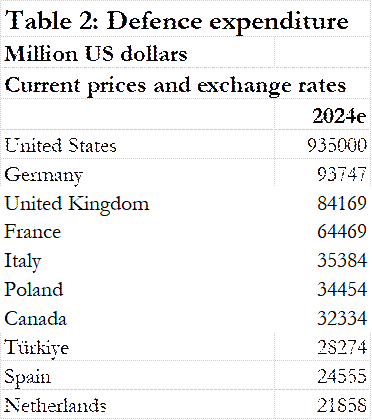I went back to Ottawa this week.
It’s been a while since I’ve been in the nation’s capital to talk about peace issues, so when the Senate of Canada contacted me, I had to go.
Prime Minister Carney’s Budget 2025 is making its way through Parliament, and the Senate’s Committee on National Security, Defence and Veterans Affairs asked me and others to help unpack the massive increase to military spending in Budget 2025.
There are so many topics to discuss: Golden Dome, the F-35s, arms exports, United Nations Peacekeeping, the harm from cuts to international assistance and Canada’s refusal to support the UN Nuclear Ban Treaty – where to begin?
Peace education is so essential – even for Senators.
So, in the five minutes I was allotted for my prepared remarks, I focussed on how Canada should determine how much to spend on its military.
“Senators, I’d ask you to consider, what do you think is the best way [to budget for defence]? The most you can afford, or right amount for what you need?”
Knowing that my presentation would be followed by a parade of military lobbyists, retired generals, NATO officials and the like, I hoped to arm Senators with questions to challenge that drum beat of more and more for war.
How did you think I did? Watch the 5-minute video above.
You can watch the video above to see my opening remarks. You can also watch the entire discussion including the presentation by my dear colleague and friend former Ambassador Peggy Mason of the Rideau Institute, and the questions that followed.
If you don’t have time to watch the video, I have pasted a transcript of my presentation below to read at your leisure.

SECD - Standing Committee on National Security, Defence and Veterans Affairs
Steven Staples, November 17, 2025
Thank you Senator Zaibak and thank you for the invitation.
Good afternoon Senators, my name is Steven Staples and I am a policy analyst on defence, foreign policy and other issues for over 25 years. I am delighted to join my colleague from the Rideau Institute, former Ambassador Peggy Mason, on this panel.
As you know, Budget 2025 announced Prime Minister Mark Carney’s government is accelerating investments to meet the North Atlantic Treaty Organization’s (NATO) 2 per cent of gross domestic product (GDP) target this year and put Canada on a pathway to meet the NATO Defence Investment Pledge of investing 5 per cent of GDP in defence by 2035.
Budget 2025 proposes to provide $81.8 billion over five years to rebuild, rearm, and reinvest in the Canadian Armed Forces (CAF).
However, it has very few details on how the money will be spent, on what capabilities, and for what purpose. This should be of great interest and concern to Senators.
It’s clear that priorities for defence spending are being driven by rather arbitrary targets set by NATO. In my view this is not the manner in which Canada’s defence budget should be determined.
Defence spending decisions should be set based upon our legitimate security needs – not the size of our economy, or GDP.
The steps by which Canada’s sets defence spending should
first, determine the threats to Canada,
second, define what capabilities we need to meet those threats,
and finally, set the budget accordingly.
Instead, the government has reversed this process by first setting the budget at 5% of GDP, then rushing out to spend the billions on largely undefined priorities. And its fair to say that the Prime Minister has not clearly articulated what threats Canada faces which requires a quadrupling of our military spending by 2030.
For instance, we currently operate a fleet of four submarines. The government has announced it is tripling the fleet to12 submarines at am estimated cost of $60 billion. Yet there has been no explanation of why we need a fleet three times what we currently have.

Let’s take a moment and consider that NATO target of 5% of GDP for defence spending – including infrastructure.
NATO actually measures defence expenditures using three methods: % of GDP, real dollars, and per capita.
You might be surprised to learn that Canada is seventh highest in NATO in actual dollars, according to NATO, behind the US, UK, Germany, France, Italy and Poland.
NATO tends to put the focus on its members’ level of defence spending in percentage of GDP because it prioritizes “burden-sharing” where each member, including Canada, spends as much as it can afford.
This contradicts an approach to defence spending where the budget is set at what the nation legitimately needs for its defence.
Senators, I’d ask you to consider, what do you think is the best way? The most you can afford, or right amount for what you need?
In conclusion, I would suggest that Senators would be not be wrong to be concerned that the rush to reach the NATO 5% GDP goal leaves the public purse open to waste, abuse, and secrecy.
The government has not been asked basic questions about its plans to spend the billions – and how these plans address security threats faced by Canada.
Why 12 submarines, when we have 4 today?
Why 88 fighters, when the Harper government only wanted 65.
Why 15 destroyers, when our current fleet of frigates is 12 vessels?
Why overturn decades of policy supporting peaceful uses of space and agree to contribute to President Trump’s Golden Dome scheme?
Canadians deserve to be part of the discussion and decisions regarding the use of public dollars – including National Defence. In the 1990s the government led a thorough public review of Canada’s security needs at the pivotal moment with the end of the Cold War. Some may say we are in an equally pivotal moment today.
Now is the time to engage Canadians in a new public review to define Canada’s defence and foreign policies, determining our role in an increasing unstable world. Thank you.
Leave a comment to explain your vote.






